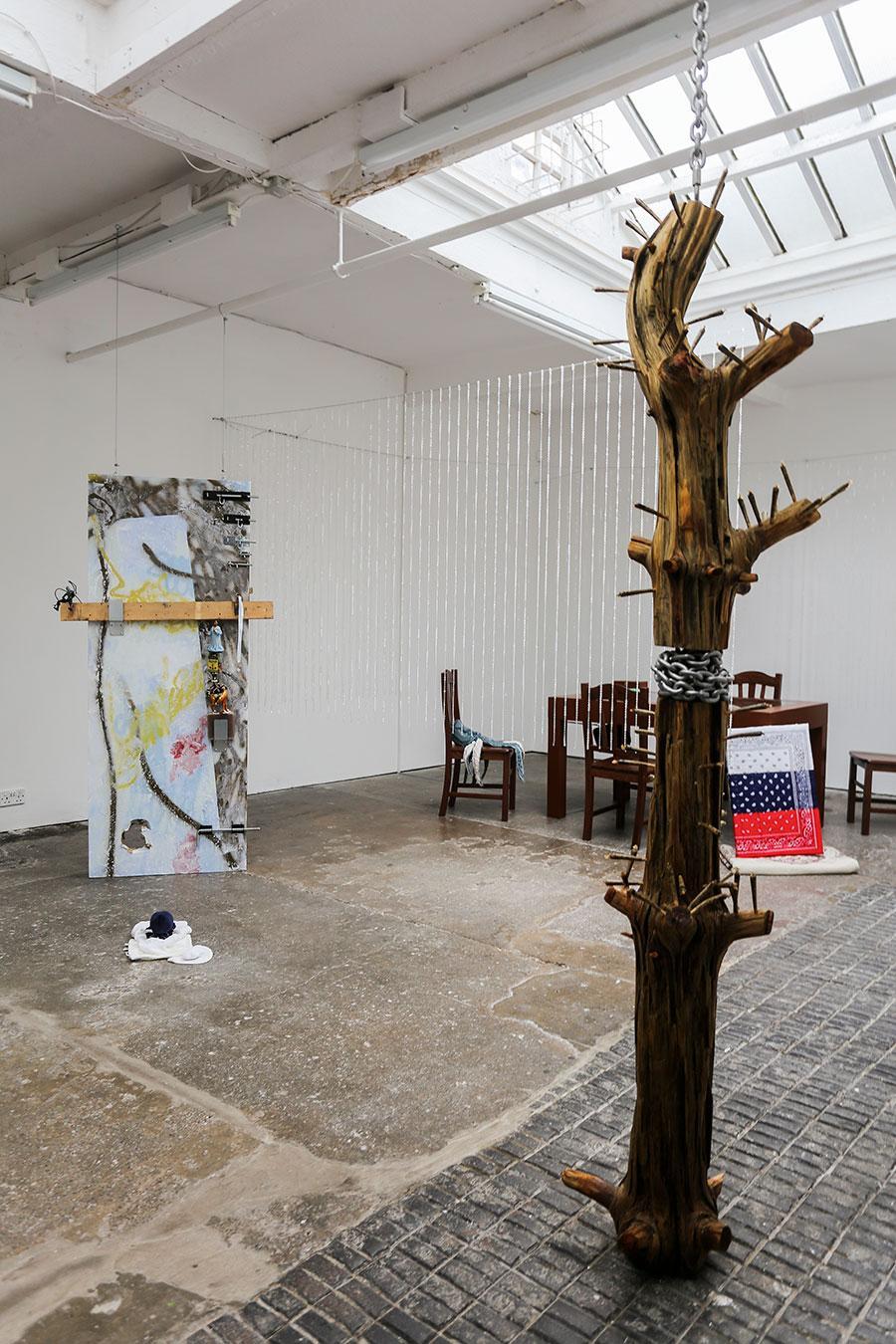R.I.P. Germain Positions Mourning as an Act of Activism
At Cubitt, London, the artist reenacts Caribbean rituals and pastimes to preserve the legacy of his loved ones
At Cubitt, London, the artist reenacts Caribbean rituals and pastimes to preserve the legacy of his loved ones

Visitors are given a pamphlet resembling a funeral order of service in ‘Dead Yard’, a solo exhibition by Luton-based artist R.I.P. Germain. Across three sculptural installations and a reading room, the works, titled after the artist’s late family members, position the legacy preservation of his loved ones as a process of activism. Mourning, here, is an emancipatory act that reifies histories which have been otherwise erased.

Sonny (all works, 2020) is a sound piece and bespoke domino table, fitted with hidden speakers and a glass-topped vitrine holding an assortment of everyday items. In Imarl, a door is presented as a standing canvas, fitted with locks. The surface is divided by erratic lines of spray paint, which, as the artist details in the exhibition text, were ‘applied and reapplied in a state of rage’. Beneath a wooden drop bar, a porcelain figurine of a gospel singer balances atop an upturned bottle of Jamaican white rum, stuffed with patterned fabric. References to coping mechanisms – music, drowning your sorrows – continue on the surrounding floor, where a soft toy placed on a toddler’s blanket stopped me in my tracks.

In the main gallery is _ _ _ _ _, a mini library of 300 publications chosen by the artist. Children’s books (including Faith Ringgold’s Tar Beach, 1991) are displayed across three tables, each draped in vivid strips of green, yellow and red fabric – an homage, the artist writes, to ‘flags of nations known for their resistance to slavery and colonialism’. It calls to mind the supplementary school movement that emerged in the UK during the late 1960s, in which Black parents and teachers collectively intervened to rectify mainstream British education’s omission of the history of Caribbean anti-colonial struggle. Yet, while Sonny and Imarl specifically explore the artist’s Caribbean parentage and lived experience in the UK, the library attempts to open ‘Dead Yard’ onto a wider discourse, which is ultimately stretched too wide and thin. Vacant chairs around the domino table invite audiences to interact, gesturing toward a potentially functional social space, but the overwhelming, disproportionate presence of the books detracts from the exhibition’s delicate melancholy.
Main image: R.I.P Germain, ‘Dead Yard’, 2020, exhibition view. Courtesy: the artist and Cubitt, London
























